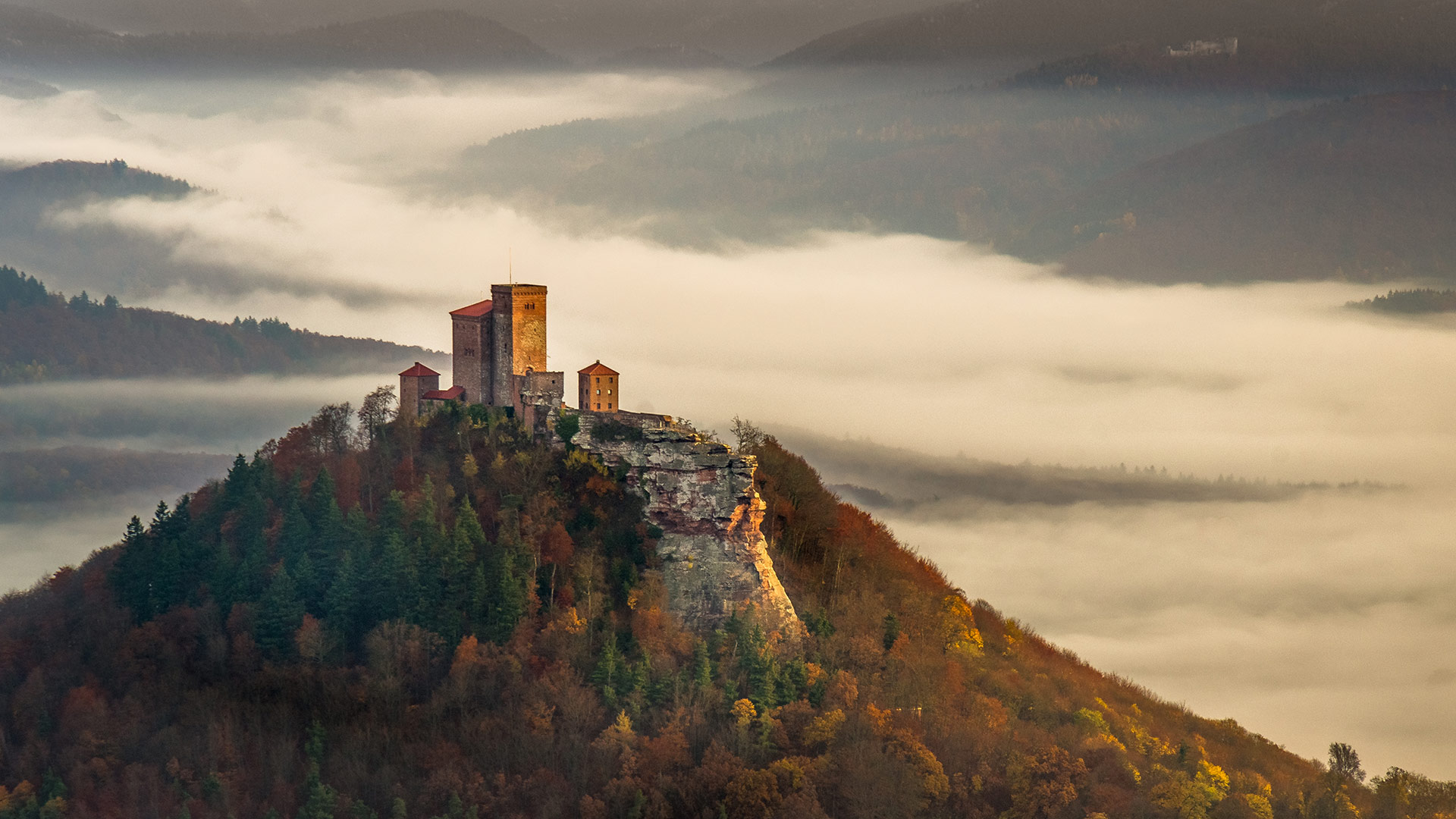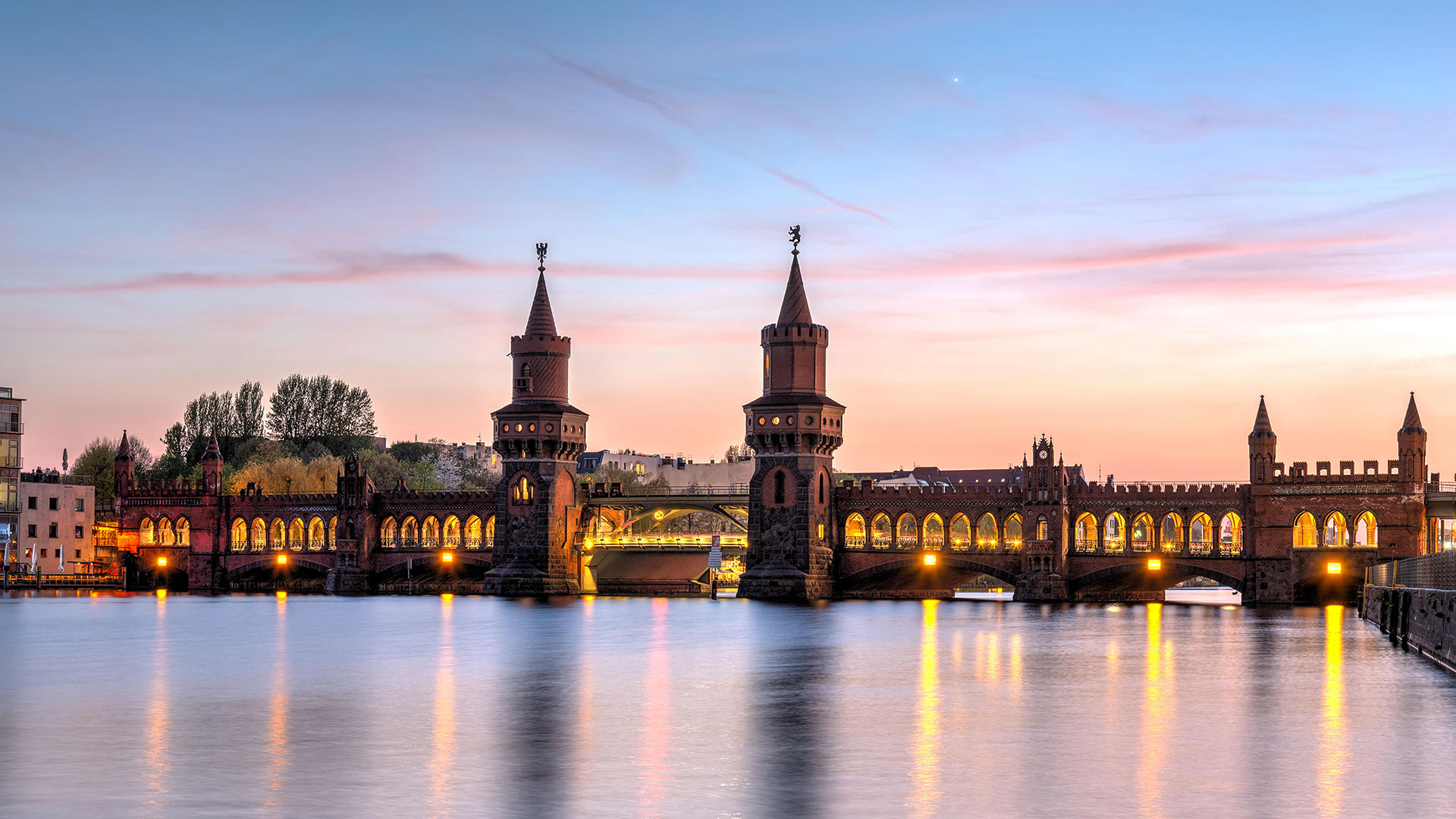分类 必应美图 下的文章
锡安国家公园的秋色,犹他州 Fall colors in Zion National Park, Utah (© pabradyphoto/Getty Images)
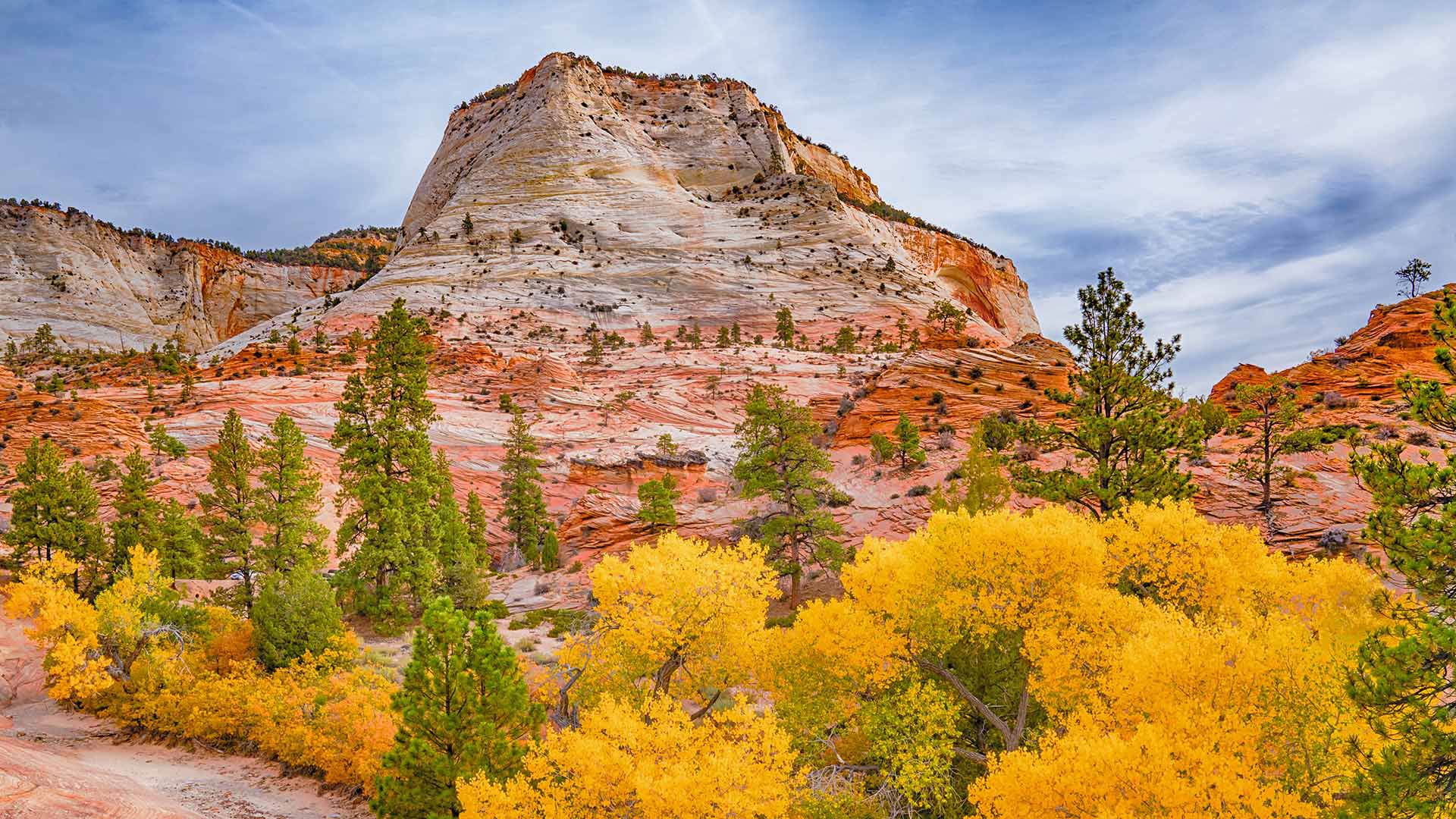
锡安国家公园的秋色,犹他州 Fall colors in Zion National Park, Utah (© pabradyphoto/Getty Images)
Zion National Park Turns 100
It's been exactly 100 years since President Woodrow Wilson signed an act to convert Mukuntuweap National Monument into Zion National Park. Fewer than 2,000 people visited back in 1919 due to poor road conditions and lack of trails. These days, the park has the opposite problem—with more than 4 million people coming each year, crowds create long lines for shuttles and clog popular areas such as the Narrows. Part of Zion Canyon, the Narrows can be seen from a paved path. But many people like to experience it up close, hiking in the Virgin River, and it can get crowded at peak times since it's—as the name implies—narrow.
In recent years, Zion has even moved ahead of Yellowstone and Yosemite to become the fourth-most-visited US national park (Great Smoky Mountains, the Grand Canyon, and Rocky Mountain parks are the top three respectively). Also contributing to Zion's popularity is its proximity to other attractions. It's part of the Grand Circle, a region that includes parts of five states and is the most concentrated area of national parks and monuments in the country.
伏尔塔瓦河上的查理大桥和老城桥塔,捷克布拉格 (© Markus Lange/Offset)
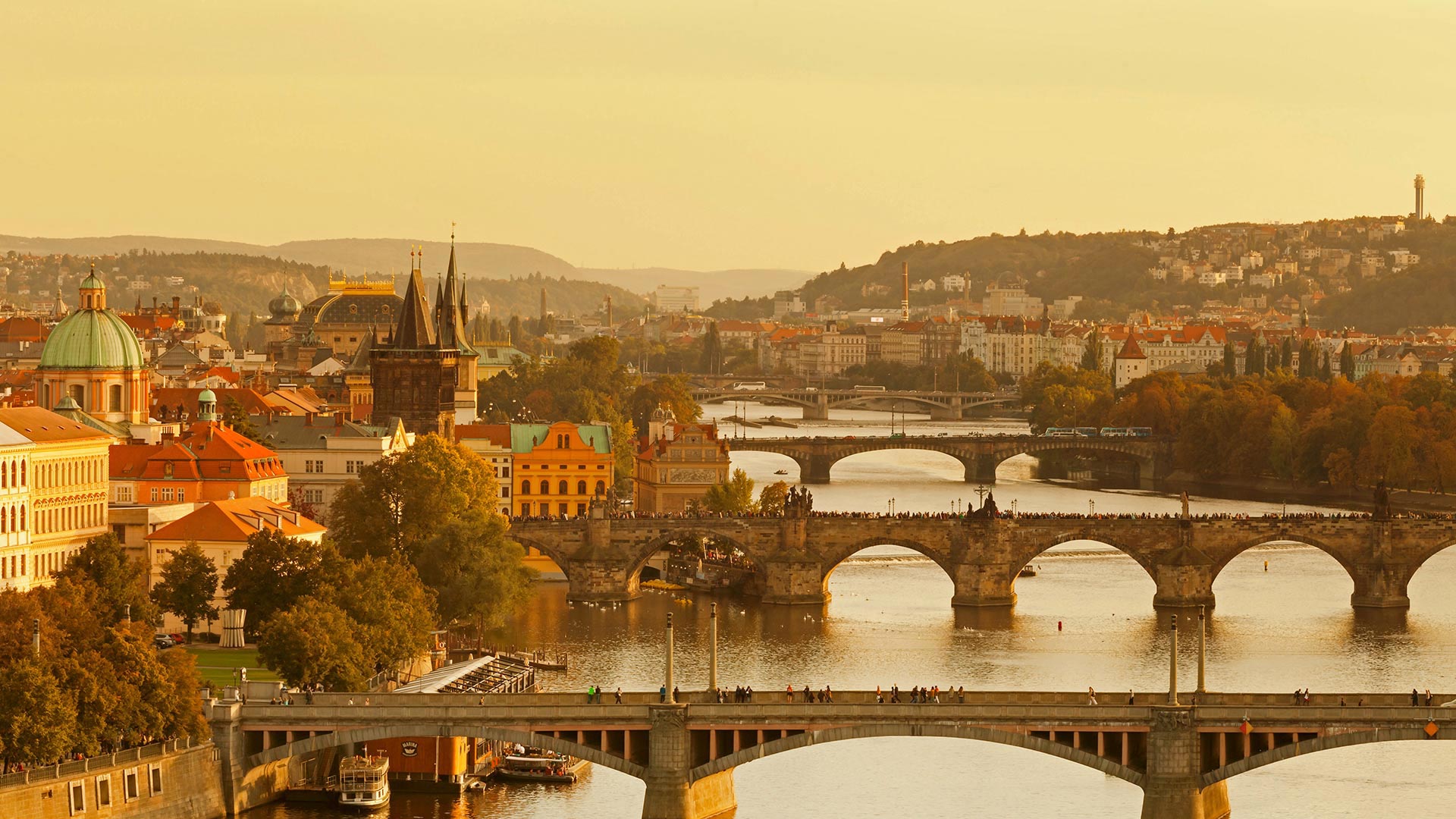
伏尔塔瓦河上的查理大桥和老城桥塔,捷克布拉格 For the 30th anniversary of Czechoslovakia's Velvet Revolution, bridges over the Vltava River, including the Charles Bridge and Old Town Bridge Tower, Prague, Czech Republic (© Markus Lange/Offset)
Remembering the Velvet Revolution
Today we're visiting Prague for the 30th anniversary of the start of Czechoslovakia's Velvet Revolution. On November 17, 1989, during their annual International Students Day observance, 15,000 students in Prague began demonstrating against the Communist Party's authoritarian rule over the country. After the official end of the demonstration, the students continued marching to the center of the city. When they reached Národní Street, they were met by security forces who, after blocking all escape routes, began attacking. Afterwards, unfounded rumors of an injured or possibly dead student triggered strikes among students, actors, and other theater workers. These groups began calling for a general strike later in the month.
Within days, mass demonstrations were happening in Prague's Wenceslas Square and spreading to other cities. By November 27, the movement had grown so large that 75 percent of the population participated in general strike across the country. Demonstrators and dissidents would successfully achieve the nonviolent end to communist rule over Czechoslovakia on December 10 and within months Soviet troops would leave the country.
大雾笼罩下的巴伐利亚阿尔卑斯山脉,德国 Fog shrouds the Bavarian Alps in Germany (© Anton Petrus/Getty Images)
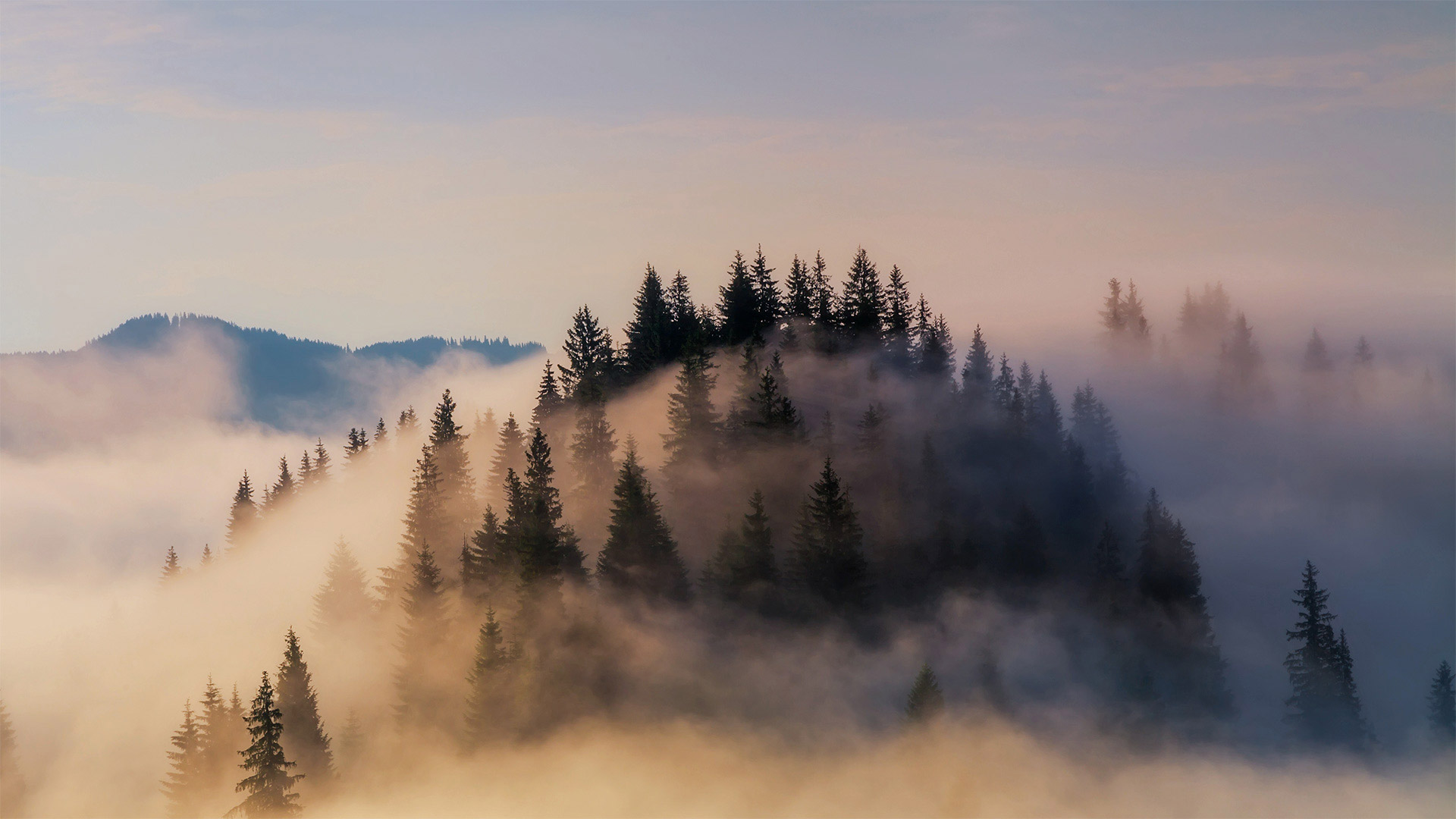
大雾笼罩下的巴伐利亚阿尔卑斯山脉,德国 Fog shrouds the Bavarian Alps in Germany (© Anton Petrus/Getty Images)
Mountain mists over Bavaria
If the forecast in Bavaria calls for 'nebel'—you'll know that means fog. In modern German, the word for 'November' is 'November.' But an older German term for this month was 'Nebel-mond' which translates to English as 'fog month'—it's the time of the year when fog is most likely to roll in. In some parts of the world the topography and local climate make fog a regular feature of the weather, especially during certain times of the year. That's called 'fog season.' San Francisco has a fog season. Tampa, Florida, does too. Is there a fog season where you live?
夕阳下的椋鸟,英格兰布莱克浦 Starlings at sunset in Blackpool, England (© Mediaworld Images/Alamy)
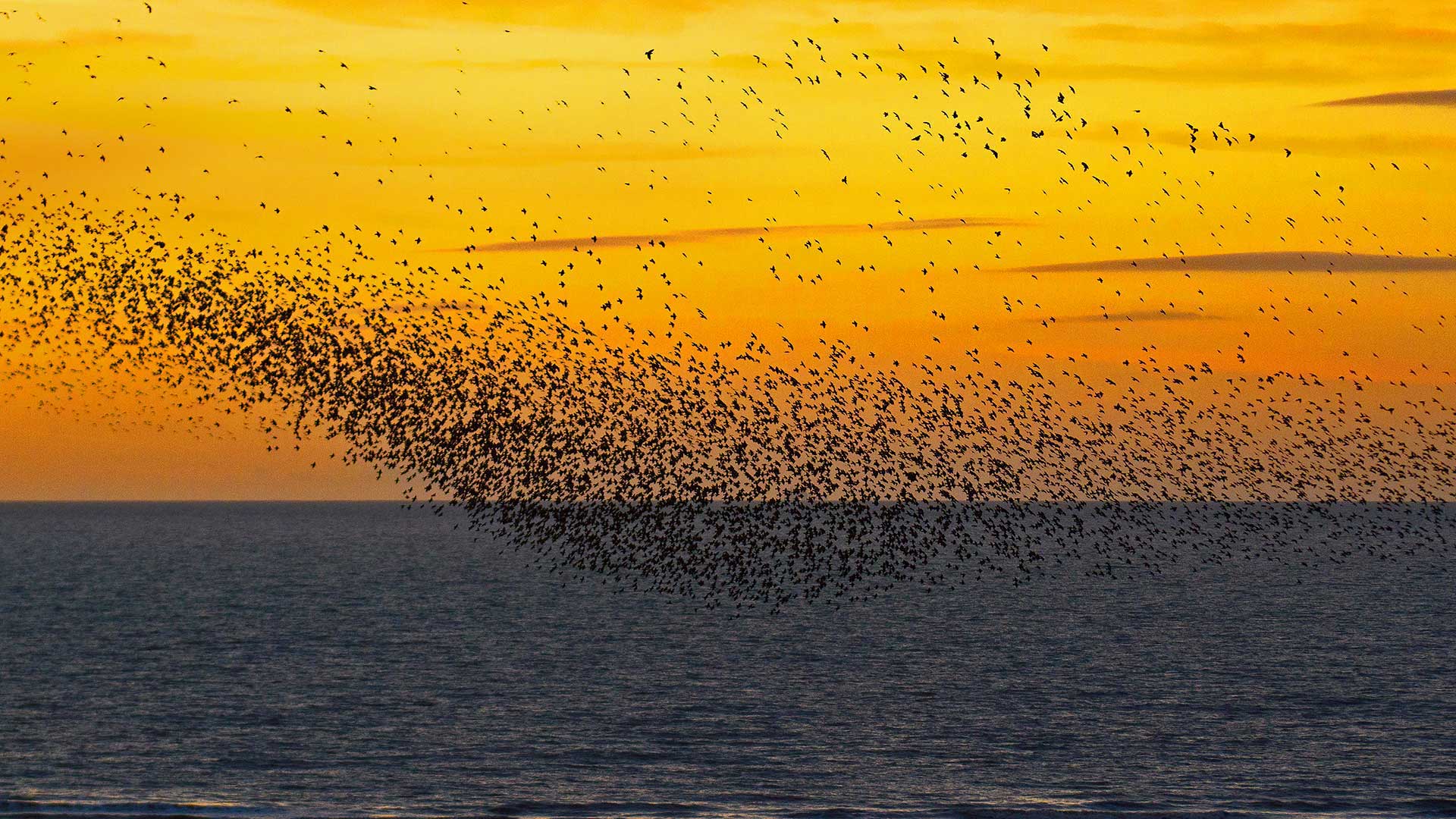
夕阳下的椋鸟,英格兰布莱克浦 Starlings at sunset in Blackpool, England (© Mediaworld Images/Alamy)
Mesmerizing murmuration
Around this time of year, as temperatures dip in the Northern Hemisphere, European or common starlings put on a dazzling show. Most of the time, these noisy birds are scorned for their bullying behavior at the birdfeeder. But in autumn months, they gather to roost in huge flocks, like here in Blackpool, England. At dusk, the starlings take flight en masse and flock together in a hypnotizing, swirling cloud of fluttering wings. This behavior is called mumuration. It's thought to help keep the birds warm while also acting as a defensive tactic to confuse predators like hawks and falcons. But maybe the raptors are just awestruck by the starlings' synchronized spectacle like the rest of us.
Rodrigo Koxa riding the biggest wave ever surfed, on Nov 8, 2017, off the coast of Nazaré, Portugal (© Pedro Cruz/AP Photo)
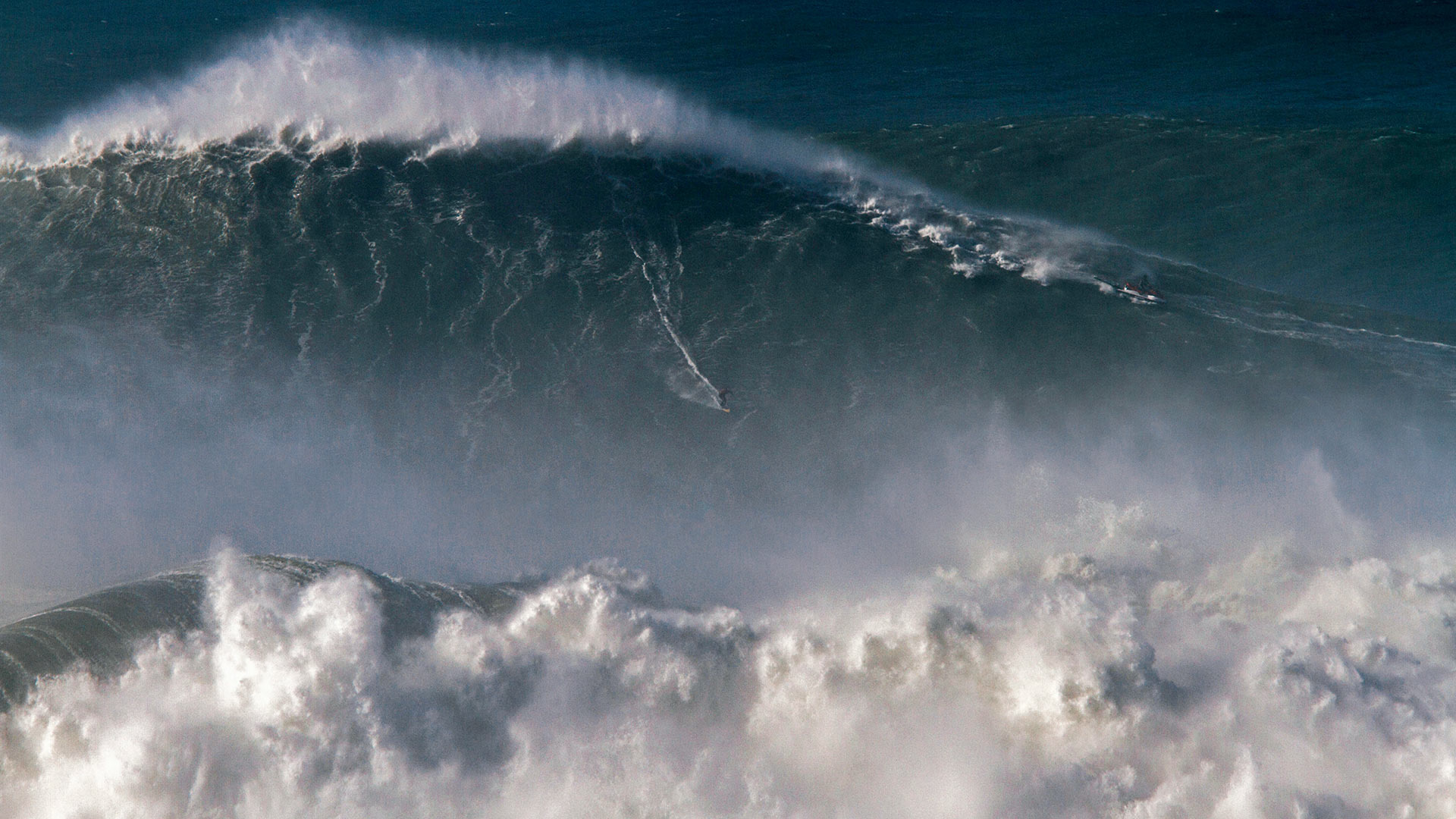
Rodrigo Koxa riding the biggest wave ever surfed, on Nov 8, 2017, off the coast of Nazaré, Portugal (© Pedro Cruz/AP Photo)
Big wave hunters watch Nazaré
Today's image captures Brazilian surfer Rodrigo Koxa in action, surfing a record 80-foot wave off the coast of Nazaré, Portugal. Nazaré began attracting surfers to the area in the 1960s and has since become a major destination for men and women who want to surf some of the world's biggest waves. Nazaré's Praia do Norte (North Beach) is the site of the two latest records for largest wave ever surfed. The previous record was set by American Garrett McNamara on November 1, 2011, when he rode a 78-foot wave here. Then, on November 8, 2017, Koxa set a new record with this ride.
Surfers' ability to catch these giant waves is a relatively new accomplishment that's made possible by using a watercraft, usually a Jet Ski or a helicopter, to tow a surfer into the wave. This time of year, with the return of the big-wave season, surfers from around the world are descending on this seaside town with their support teams. Together, they anxiously await the optimal conditions required to create these monster waves, hoping for an opportunity to test their skills and see their names added to the record book.
The 'Crown of Light' installation is projected onto Durham Cathedral during the 2013 Lumiere Durham festival in England (© Stuart Forster/Alamy)
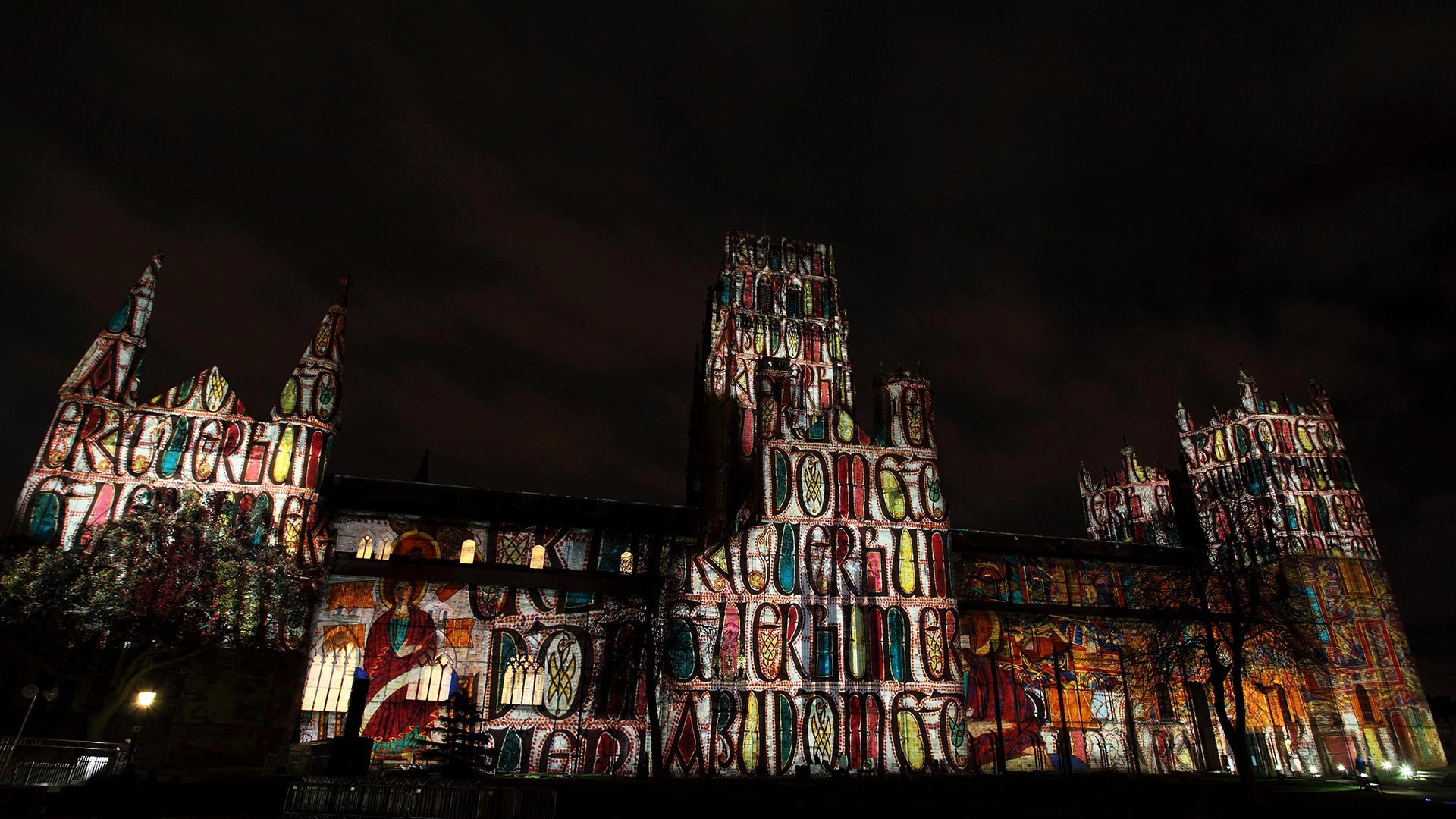
The 'Crown of Light' installation is projected onto Durham Cathedral during the 2013 Lumiere Durham festival in England (© Stuart Forster/Alamy)
The perfect canvas for an ancient text
Since 2009, the city of Durham has served as a grand stage for the biennial Lumiere Durham festival. During four days in November, works of 'son et lumière'—a French phrase that means 'sound and light'—provide spectators with new ways of viewing public spaces and buildings. Artists from around the world design large-scale light shows paired with narratives and sound effects. It's become the UK's largest light festival, and Lumiere Durham's 10th anniversary, which begins today, promises to attract more than 200,000 people to enjoy the illuminated artworks along cobbled streets.
This image from the 2013 festival shows 'Crown of Light,' a work that projects an ancient Christian manuscript called the Lindisfarne Gospels onto the exterior walls of the Durham Cathedral. The original manuscript, considered one of the world's oldest and finest examples of medieval European book paintings, was brought to the Durham area in the 9th century by monks who had fled their monastery in Lindisfarne, off the coast of Northumberland, to avoid Viking raids. The Lindisfarne Gospels is considered an illuminated manuscript because the book is painted in gold and silver with miniature illustrations and ornate border art. But at the festival, the term gets a new meaning as the illuminated manuscript lights up the cathedral for thousands of spectators to see.
秋日雾中清晨里的特里斐斯城堡,德国莱茵兰普法尔茨森林 (© Björn Lauer/Getty Images)
日落时分,柏林施普雷河上美丽的奥伯鲍姆桥 (© elxeneize/Alamy Stock Photo)
Silver birch (Betula pendula) woodland, Craigellachie National Nature Reserve, Scotland (© Nature Picture Library/Alamy Stock Photo)
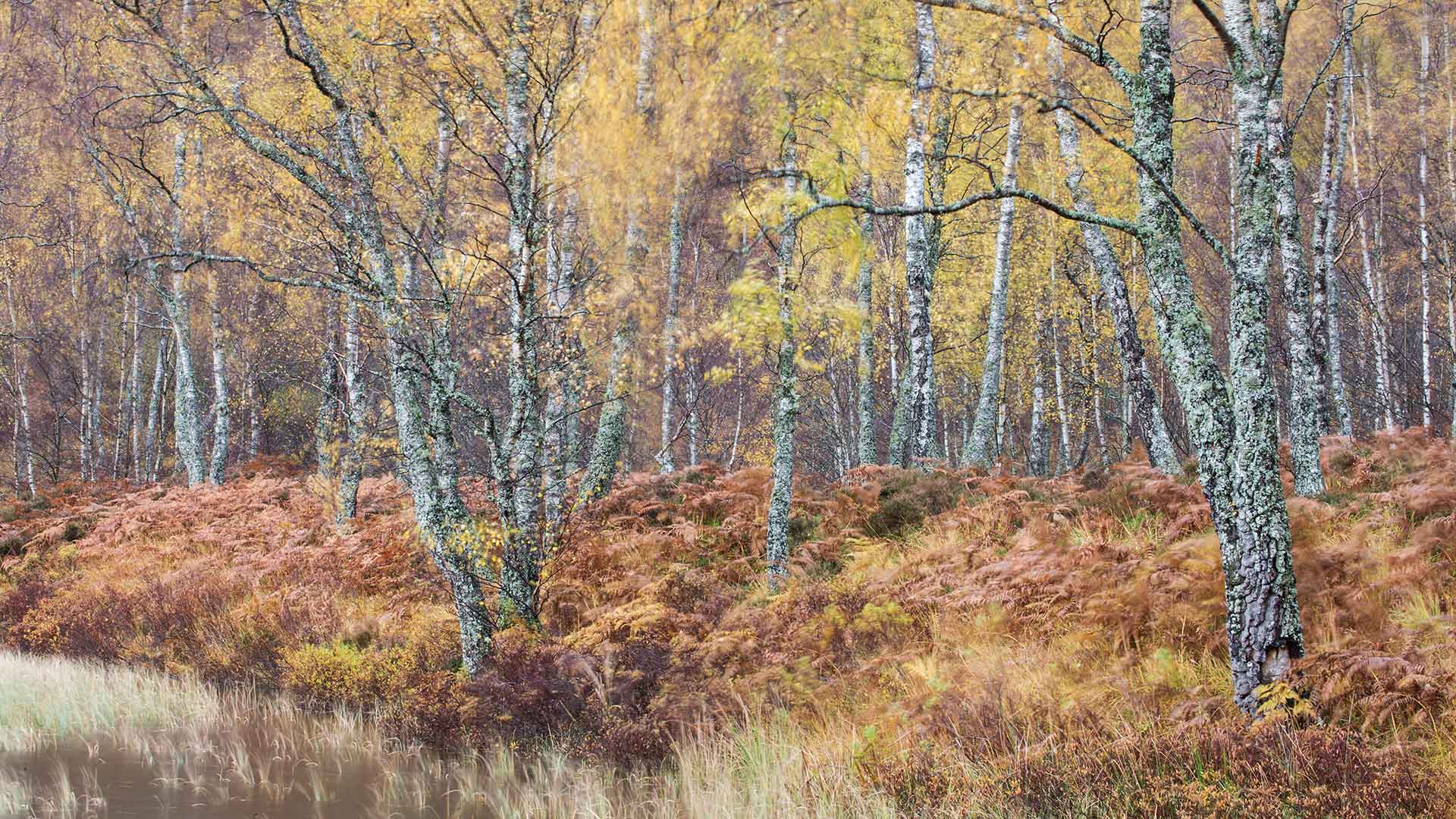
Silver birch (Betula pendula) woodland, Craigellachie National Nature Reserve, Scotland (© Nature Picture Library/Alamy Stock Photo)
The Lady of the Woods
Silver birch trees like these in Craigellachie National Nature Reserve have long been celebrated as symbols of purity and rebirth. In early Celtic mythology, bundles of their twigs were used to drive out spirits of the old year while in Scottish Highlands folklore it was believed that a barren cow herded with a birch stick would become fertile. Known as the “lady of the woods”, the old Gaelic word for birch, beith, can be found in some Scottish place names – the same goes for birk in England and bedw in Wales.
This nature reserve in Strathspey, in the Highlands, is known for its upland birch woodland, which is home to an impressive selection of moths among a wide variety of other creatures from dragonflies to peregrine falcons. The light, open canopy of silver birches also encourage wood anemones and dog violets to grow during the spring and summer – as well as offering a glimpse of panoramic views of Britain’s largest national park – the Cairngorms - which can be enjoyed, unobstructed, if you climb to the hill’s craggy summit.
The Brandenburg Gate seen through a heart-shaped replica of the Berlin Wall (© Britta Pedersen/picture alliance via Getty Images)
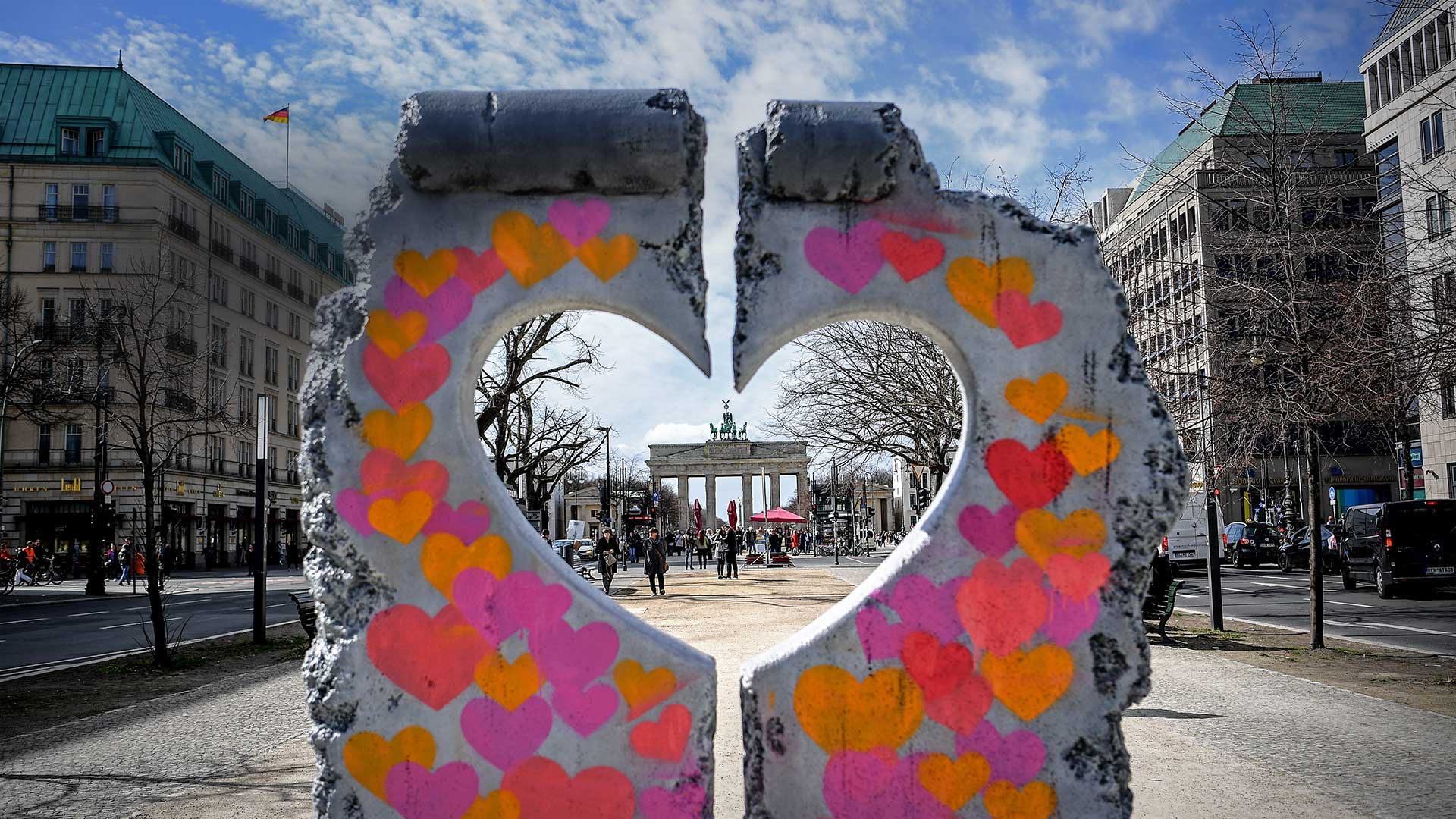
The Brandenburg Gate seen through a heart-shaped replica of the Berlin Wall (© Britta Pedersen/picture alliance via Getty Images)
We heart Berlin
We're gazing at the Brandenburg Gate—a symbol of peace and unity—through a heart-shaped replica of a remnant of the Berlin Wall, a symbol of the political division that once marked the German capital. Today marks the 30th anniversary of the fall of the concrete barrier that once obstructed this view.
Although it stood for 28 years, the fall of the wall was sparked on November 9, 1989, when an East German official mistakenly announced a newly relaxed travel policy during a broadcasted press conference. Within hours, thousands of hopeful East Berliners rushed the wall, overwhelming border guards who reluctantly opened the checkpoints. Soon Berliners from the East and West were on the wall, joyfully dancing together, breaking off pieces with their hands, hammers, and anything else they could use to crumble the cement. Shortly afterward, the wall finally came down and borders were opened.
Conditions that led to the wall began in the years following World War II, when Berlin was divided into Soviet-controlled East Berlin and the American, British, and French sectors known as West Berlin. Although East Berliners weren't allowed to emigrate, they managed to do so nonetheless, and by 1961, millions had left for life in the West, nearly bringing the East German economy to ruin. It was then, on August 13, 1961, that Berliners woke up to a barbed-wire fence cutting off West Berlin from East Germany, including East Berlin. Within days, East Germany fortified the barbed wire with concrete, eventually reinforcing it with an outer and inner wall, watchtowers, and floodlights, while also extending it 28 miles across the city and beyond. For nearly three decades the wall separated families and entire communities. When it finally came down in 1989, it would be another year before both cities would eventually be reunified under the new Federal Republic of Germany.
